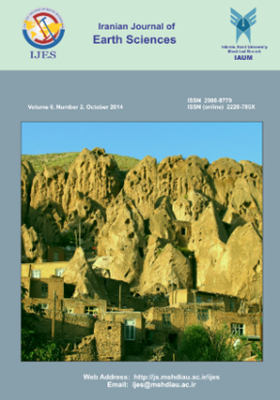Petrogenetic Evolution of Plio-Quaternary Mafic Lavas in Nehbandan (East Iran)
Subject Areas : MineralogyMohammad Reza Ghasempour 1 , Javad Mehdipour Ghazi 2 , Habib Biabangard 3 , Rahim Dabiri 4
1 - Faculty of Natural Resources and Earth Science, Shahrekord University, Shahrekord, Iran
2 - Faculty of Earth Science, Shahid Beheshti University, Tehran, Iran
3 - Department of Geology,Sistan and Baluchestan University, Zahedan, Iran
4 - Department of Geology, Mashhad Branch, Islamic Azad University, Mashhad, Iran
Keywords:
Abstract :
Both the Sistan Suture Zone of eastern Iran and the Nehbandan Fault contain Plio-Quaternary Nehbandan mafic lavas. Positive anomalies in the large ion lithophile elements (LILE) and negative anomalies in Nb (niobium) exist in these mafic lavas. This indicates the occurrence of subduction magmatism and post-collision volcanism. Petrologic and geochemical analyses distinguished two groups of lava. Group I contains alkaline basalts with a slight depletion in Nb while Group II contains sub-alkaline basaltic andesite to andesite with a sharp depletion in Nb. Geochemical studies show that fractional crystallization and crustal contamination played an important part in the evolution of the Nehbandan lavas. Group II, however, was more greatly affected than Group I. Geochemical studies also indicate that these lavas may have been generated due to a low degree of partial melting (<5%) of garnet and the spinel-bearing lithospheric mantle; Group I shows more garnet than spinel while Group II shows the opposite. The research carried out for this paper suggests that the Plio-Quaternary Nehbandan mafic lavas were formed as a result of slab detachment or delamination and domination, an extensional condition correlated to the thinning of the crust and lithosphere in the Sistan Collision Zone. These conditions are concomitant with localized stretching along the Nehbandan Fault and the upwelling of magma forming mafic lavas.


